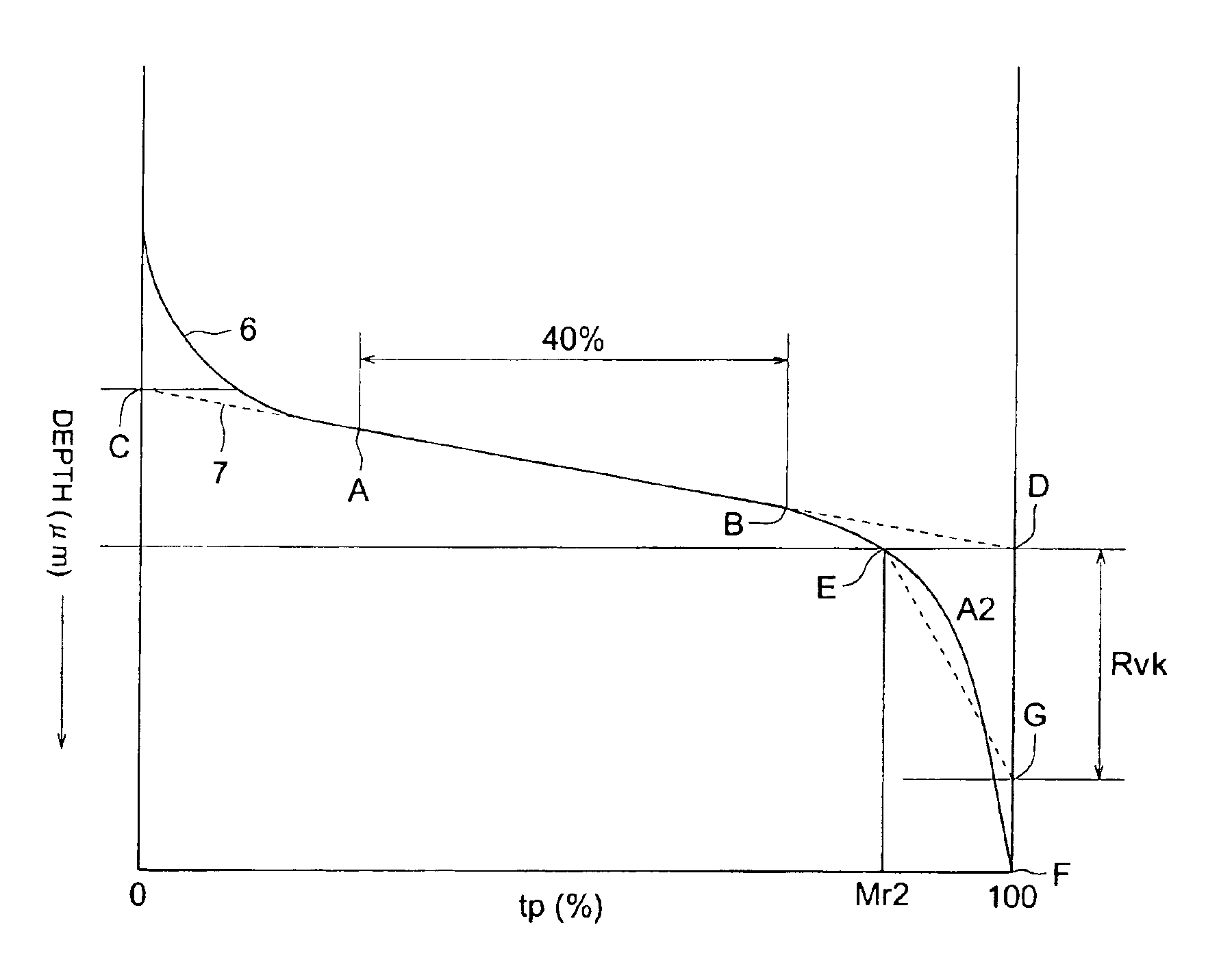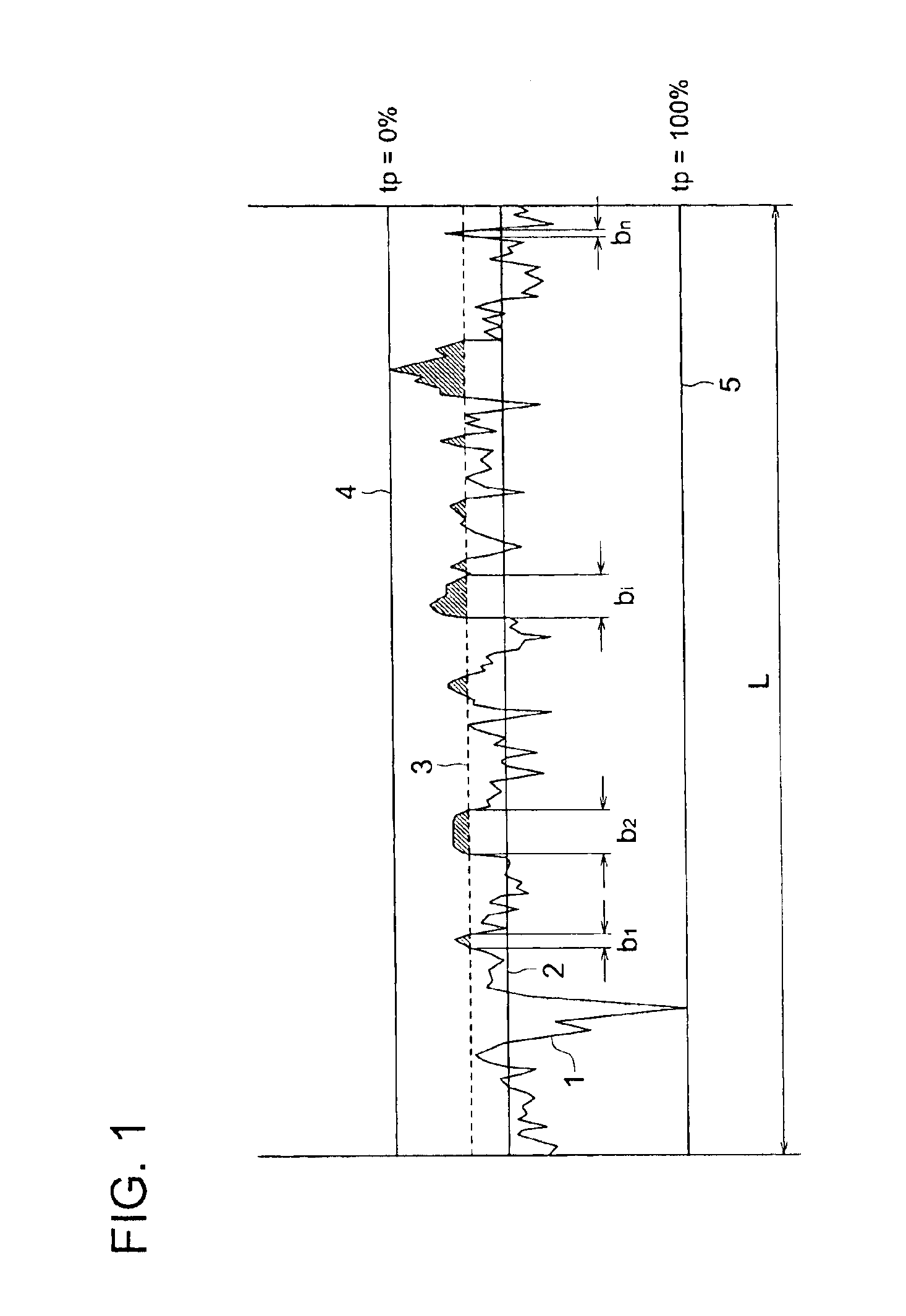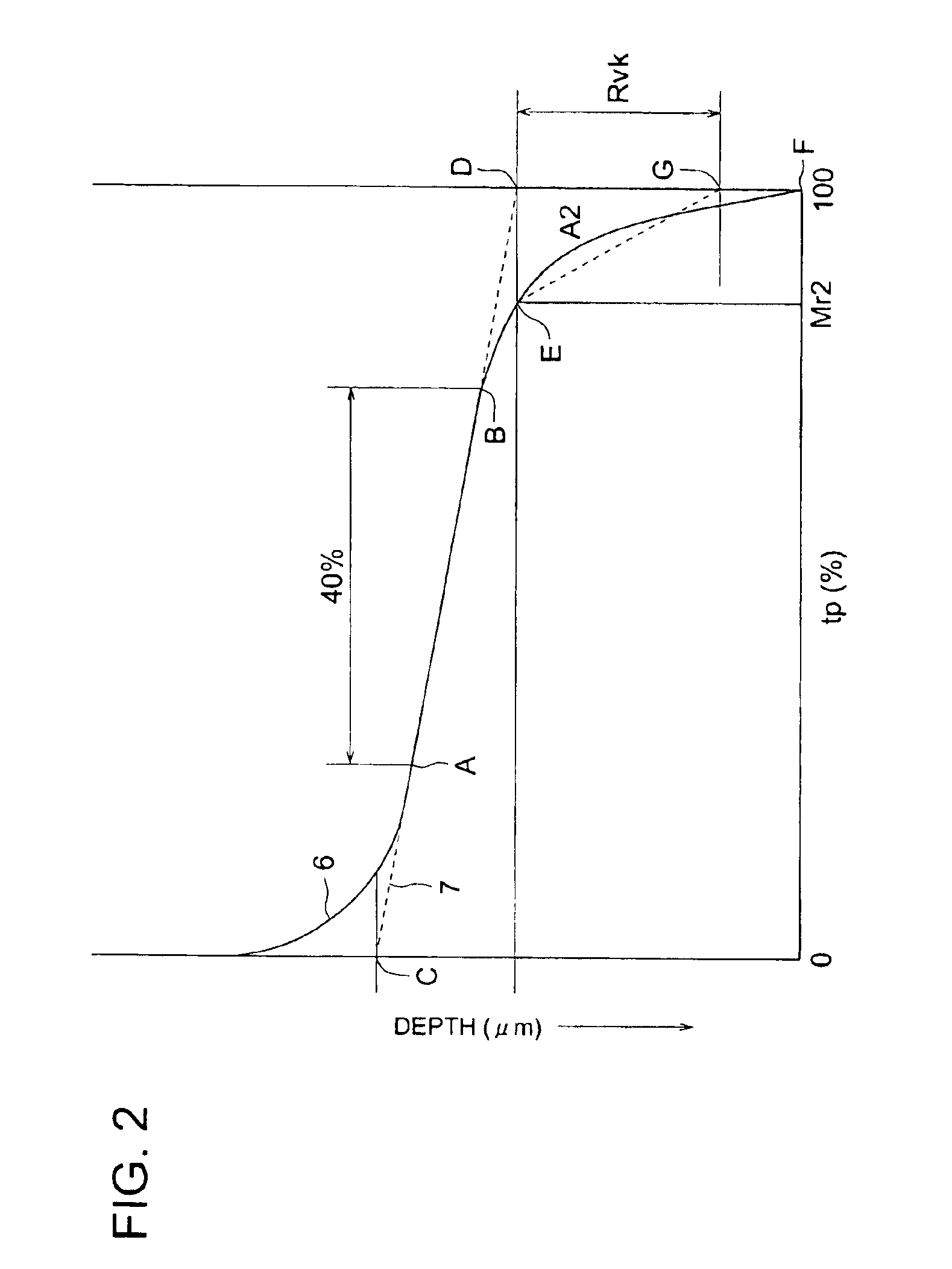Printing plate material
- Summary
- Abstract
- Description
- Claims
- Application Information
AI Technical Summary
Benefits of technology
Problems solved by technology
Method used
Image
Examples
example 1
>
(Preparation of Substrate 1)
[0131]A 0.24 mm thick aluminum plate (1050, H16) was immersed in an aqueous 1% by weight sodium hydroxide solution at 50° C. to give an aluminum dissolution amount of 2 g / m2, washed with water, immersed in an aqueous 0.1% by weight hydrochloric acid solution at 25° C. for 30 seconds to neutralize, and then washed with water.
[0132]Subsequently, the aluminum plate was subjected to an electrolytic surface-roughening treatment in an electrolytic solution containing 10 g / liter of hydrochloric acid and 0.5 g / liter of aluminum at a peak current density of 50 A / dm2 employing an alternating current with a sine waveform, in which the distance between the plate surface and the electrode was 10 mm. The electrolytic surface-roughening treatment was divided into 12 treatments, in which the quantity of electricity used in one treatment (at a positive polarity) was 40 C / dm2, and the total quantity of electricity used (at a positive polarity) was 480 C / dm2. Standby time ...
example 2
>
(Preparation of Oleophilic Layer Coating Solution)
[0155]The following materials are mixed in order to obtain an oleophilic layer coating solution.
[0156]
Colloidal silica Snowtex-XS (solid content of11.25 parts by weight20% by weight, produced byNissan Kagaku Co., Ltd.)Acryl emulsion AE986A (solid content of 35.5% 4.23 parts by weightby weight, produced by JSR Co., Ltd.)Infrared absorbing dye ADS830WS (produced by 1.25 parts by weightAmerican Dye Source Co., Ltd.)Pure water83.27 parts by weight
[0157]The solid content of the oleophilic layer coating solution was 5.0% by weight.
(Preparation of Hydrophilic Layer Coating Solution)
[0158]The following materials are mixed in order to obtain an hydrophilic layer coating solution.
[0159]
Organosilica IPA-ST (solid content of 30% by22.67 parts by weightweight, produced by Nissan Kagaku Co., Ltd.)Polyacrylic acid Julimer AC-10H (solid content 4.00 parts by weightof 20% by weight, produced byNippon Junyaku Co., Ltd.)Aminopropyltriethoxysilane 0.40...
example 3
>
(Preparation of Heat Melting Layer 1 Coating Solution)
[0173]The following materials are mixed in order, and a heat melting layer 1 coating solution was obtained.
[0174]
Carnauba wax emulsion A118 (solid content of14.00 parts by weight40% by weight, produced byGifu Shellac Co., Ltd.)Trehalose Treha mp. 97° C., produced 7.00 parts by weightby Hayashibara Shoji Co., Ltd.)Infrared absorbing dye ADS830WS (produced 0.70 parts by weightby American Dye Source Co., Ltd.)Pure water 78.3 parts by weight
[0175]The solid content of the heat melting layer 1 coating solution was 7.0% by weight.
(Preparation of Heat Melting Layer 2 Coating Solution)
[0176]The following materials are mixed in order, and a heat melting layer 2 coating solution was obtained.
[0177]
PMMA Emulsion Epostar MX-030W (solid56.00 parts by weightcontent of 10% by weight, produced byNippon Shokubai Co., Ltd.)Polyacrylic acid Julimer AC-10S (solid content 1.75 parts by weightof 40% by weight, produced byNippon Junyaku Co., Ltd.)Infra...
PUM
| Property | Measurement | Unit |
|---|---|---|
| Length | aaaaa | aaaaa |
| Volume | aaaaa | aaaaa |
| Volume | aaaaa | aaaaa |
Abstract
Description
Claims
Application Information
 Login to View More
Login to View More - R&D
- Intellectual Property
- Life Sciences
- Materials
- Tech Scout
- Unparalleled Data Quality
- Higher Quality Content
- 60% Fewer Hallucinations
Browse by: Latest US Patents, China's latest patents, Technical Efficacy Thesaurus, Application Domain, Technology Topic, Popular Technical Reports.
© 2025 PatSnap. All rights reserved.Legal|Privacy policy|Modern Slavery Act Transparency Statement|Sitemap|About US| Contact US: help@patsnap.com



